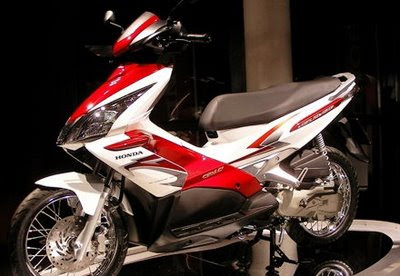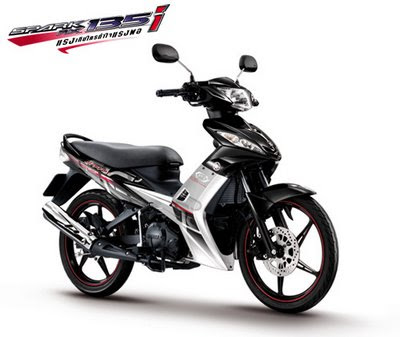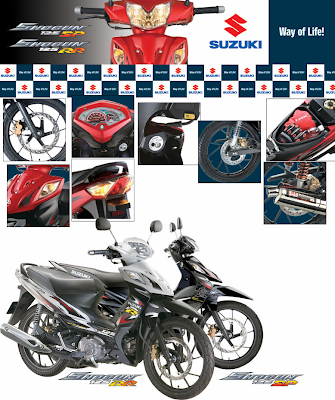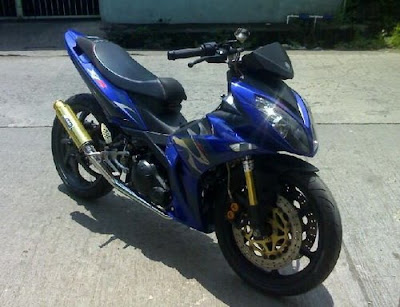Standard Yamaha RX-Z from factory is fitted with 16T and 46T (if you are wondering what is the “T” behind the number, it is actually TEETH).
Currently, I’m using 16T-42T on my Yamaha RX-Z since I use it as my daily commuter to work. For now it is okay but, after I change my original exhaust to Yoshi Racing exhaust, I think I need to do something about it. This is because the new exhaust has released more power and torque than the original standard exhaust.
My next sprocket change is to 16T-39T as pictured above. I haven’t installed this yet as I’m a little bit busy for now. This changes I think will not effect much on the performance since I only use it on short trip. Using smaller rear sprocket can give benefit for long distance traveling since it can give lower RPM at the same speed using standard sprocket. It can also give better fuel efficiency since it revs low.
You should also check for the material that is used to make the sprocket. As you can see in the picture, the rear sprocket is being made with High Carbon Steel(HCS). HCS is a lighter material than steel. Also HCS is better in terms of durability since it can withstand pressure and the friction from the drive chain. The best material for sprocket is made from the mixture of metals also known as alloy. Alloy is much tougher, lighter and eventually more expensive. The hardest material that is known to man is diamond, but I have never seen sprocket being made from diamond before.
Here is another information about sprocket material for industry application at
http://www.daviesmarketing.com
“Sprocket Materials
Most standard sprockets are manufactured from steel. They can be made from many type of material, but the offerings from most manufacturers are based upon their own equipment limitations and the tooling available to cut the teeth.
Below is a listing of typical sprocket materials and their most frequent application environments.
Steel – Is considered the most typical construction material. It is available in different hardness levels (covered later) and is used in all types of applications.
Bronze – Is a metal used in non-magnetic applications where ‘no sparking’ is required. It can also withstand the abuse of some corrosive environments.
Brass – Is also a non-magnetic application material with the ability to stand up in a number of corrosive environments.
Stainless Steel – This is the most common material used for corrosive environments. It is widely applied throughout in the food processing industry and most manufacturers have types approved for direct food contact.
Titanium – Light weight and very strong, this metal is a silvery, dark grey colour and is designed for highly corrosive applications or direct chemical exposure such as in the electrical industry where printed circuit boards are cleaned.
Aluminium – Silvery, light weight metal that can resist corrosion but is restricted to light duty, light load applications. Typically used in belt and pulley applications (timing belts).
Nylon (Plastic) – As with roller chain, nylon is also used for anti-corrosive environments, as well as for quietness.
Nylon materials are also generally less expensive than metal. Nylon sprockets can be used in the food industry, as they hold up well in wash down situations. These plastic sprockets can be constructed from electro-conductive through heat resistant styles – similarly found in plastic chain.”
What is the sprocket that you are using now? Let’s share the knowledge!








































